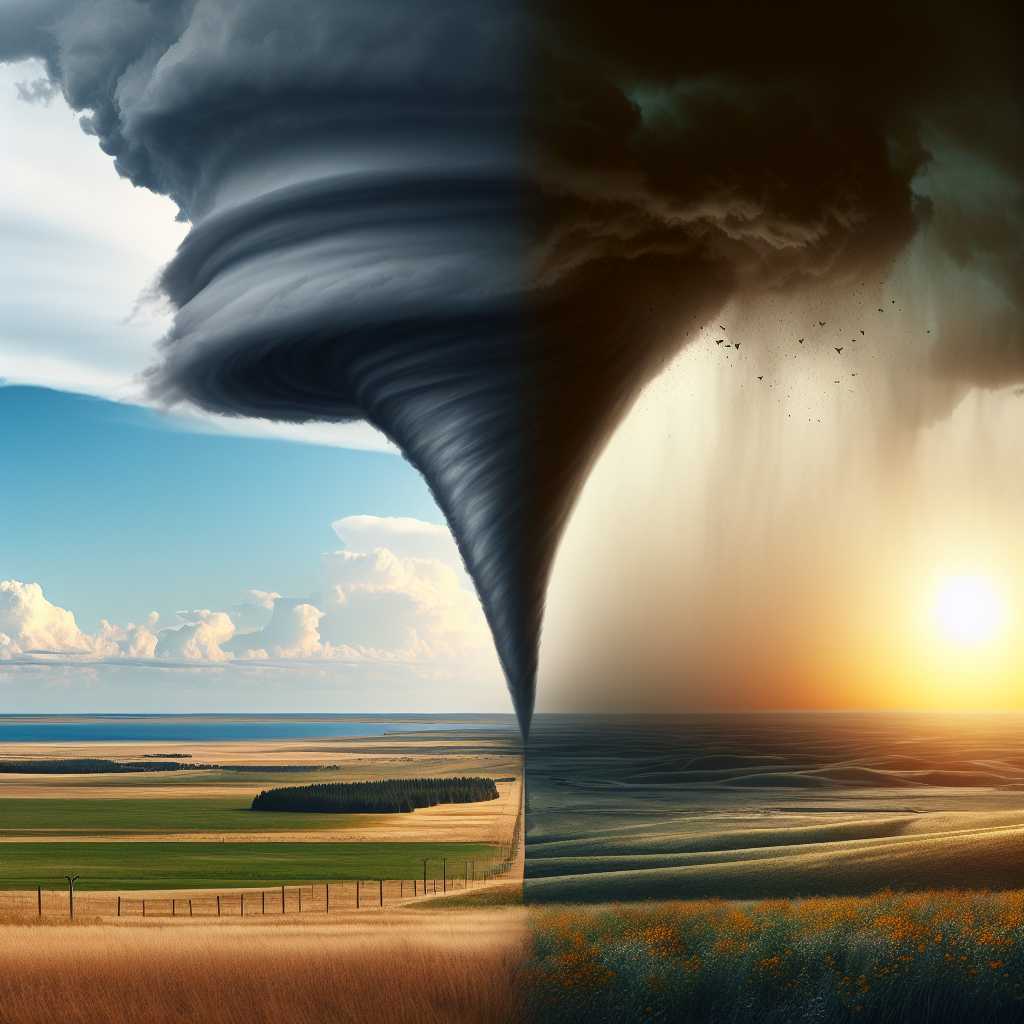Understanding Twisters: A Comprehensive Overview of Tornado Phenomena
A twister, commonly known as a tornado, is a violent and dangerous weather event characterized by a rotating column of air that connects to both the surface of the Earth and a cumulonimbus cloud or, in rare cases, the base of a cumulus cloud. This article provides an in-depth look at the formation, characteristics, and impacts of twisters, as well as the methods used for their detection and study.
The Formation of Twisters: Understanding the Meteorological Conditions
Twisters are formed under specific meteorological conditions. They most commonly develop during strong thunderstorms, where variations in wind speed and direction at different altitudes create wind shear. This shear can cause the air to spin horizontally. An updraft within the thunderstorm will then tilt this spinning air into a vertical orientation. If these conditions persist, the rotating air can tighten and intensify, creating a twister that begins to descend from the cloud base.
The Enhanced Fujita Scale categorizes twisters into six categories, from EF0, indicating wind speeds of 65-85 mph, to EF5, with speeds over 200 mph. An EF5 twister has enough force to lift sturdy structures off their foundations and efface them completely.
Geographic Disposition and Seasonality of Twisters
Twisters have been reported on all continents except Antarctica but are most frequent in the United States, especially in an area termed “Tornado Alley,” which encompasses parts of Texas, Oklahoma, Kansas, Nebraska, Colorado, and South Dakota. This region’s unique topography and climate conditions make it particularly susceptible to these events.
Contrary to popular belief that twisters are solely a spring phenomenon, they can occur throughout the year if the meteorological conditions are favorable. However, they do exhibit peak activity in spring and early summer when warm, moist air from the Gulf of Mexico interacts with cool dry air from Canada and the Rocky Mountains.
The Damage Trail: Impact of Twisters on Society and Environment
The impact of twisters on human societies can be devastating. They can lead to loss of lives, destroy houses and infrastructure, uproot trees, and hurl vehicles and debris at destructive speeds. Such violent forces not only disrupt communities but also pose long-term economic burdens on affected areas due to reconstruction costs and lost productivity.
A tornado’s path can also have significant environmental consequences by altering landscapes, damaging ecosystems, and displacing wildlife. Furthermore, post-tornado recovery efforts frequently place additional strains on natural habitats.
Detection and Prediction: The Pursuit of Advanced Warning
Advancements in meteorology have considerably improved twister detection and prediction capabilities. Doppler radar systems are instrumental in providing real-time data on weather patterns conducive to the formation of twisters. Meteorologists also rely on storm spotters on the ground to report sightings, which when combined with radar data can provide an effective warning system.
The goal is to provide as much lead time as possible because even a few extra minutes can significantly increase the chances of reaching safety. Community preparedness plays a crucial role as well; thorough education about where to seek shelter during a tornado (e.g., basements or specially designed “safe rooms”) can be life-saving.
Modern Studies and Safety Measures: Looking Forward
Ongoing research aims to better understand the genesis of twisters through improved simulation models and field studies like storm chasing approaches which help collect valuable data. Contemporary efforts also tend toward the construction of more robust infrastructures able to withstand higher winds.
Investment in early warning systems and continuous public education campaigns is vital for communities prone to tornadoes. Basic tips such as recognizing weather signs that precede twisters, having a planned response for when warnings are issued, and practicing regular drills can all contribute to minimizing their impact.
